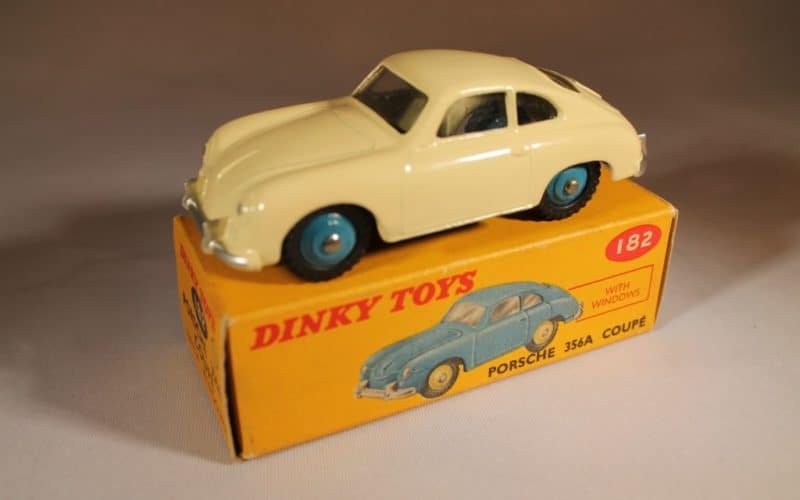
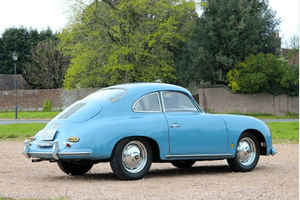
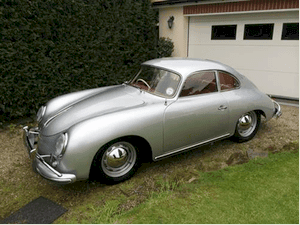
A brief history of the real car...
Porsche was initially launched in Austria in 1948 by a company called Porsche Holding GmbH, headquartered in Salzburg Austria. It was founded by Louise Piech and Ferry Porsche (daughter and son of Ferdinand Porsche). The Porsche 356 was its first production, producing around 50 units in the first year. In 1950 the factory relocated to Zuffenhausen, Germany, and general production of the 356 continued until April 1965.
The 356 was a lightweight rear-engine, rear wheel drive 2-door sports car, available in hardtop coupe and open configurations.
Ferdinand Porsche senior had previously designed and created the Volkswagen Beetle and so no surprise that son and daughter continued the famous innovations of German car manufacturing. Also a point worth noting is that, like the Beetle, the original design was still in evidence by the end of each car’s manufacturing history.
The Porsche 356A was first introduced in 1955 after a few small but significant adjustments were made to the pre 356A. Its nickname amongst enthusiasts became known as ‘T1’.
History
First issued in 1958 and available until 1966, this highly attractive sports car was initially released in two colours; blue and cream with reverse wheel colours. Various colour changes took place, particularly in its later years, with several wheel colour and material adjustments.
The base changed from the standard pressed design, to the black gloss and then matt finish. The box also received plenty of attention, with several stages of design alteration.
There are some rare colours available with this model and, I believe, some that I have not discovered and therefore will not be included in my inventory. However, I have heard of some additional findings which I would want further confirmation on before including.
Common to all models issued are the following; windows, M tyres and tail lights. ‘182’ was on all bases.

Variations
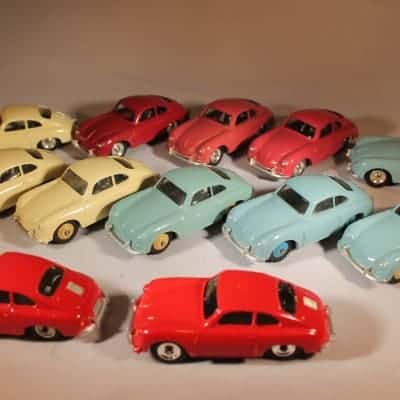
Here is a list of the variations I can confirm:
- Cream body with tan ridged wheels & standard base————————£500+
- Cream body with blue ridged wheels & standard base—————-£120-£160
- Blue body with cream ridged wheels & standard base—————-£120-£160
- Blue body with blue ridged wheels & standard base——————£500+
- Cream body with blue ridged wheels & black gloss base————£150-£180
- Blue body with cream ridged wheels & black gloss base————£150-£180
- Cream body with silver spun wheels & black gloss base————£150-£200
- Blue body with silver spun wheels & black gloss base—————£300-£400
- Deep Pink (lightest) with silver spun wheels & black gloss base–£250-£325
- Mid Cerise with silver spun wheels & black gloss base————–£250-£325
- Deep Cerise with silver spun wheels & black gloss base————£230-£270
- Red with silver painted wheels & black gloss base——————–£325-£400
- Red with silver spun wheels & matt black base————————-£275-£350
Boxes
- Yellow picture box with cream or blue end spots, or red applied end spot.
- Lighter yellow picture box with clear end spots.
- Lighter yellow picture box with no printing for end spot.
- Red and yellow panel non picture box.
Each of the last 3 examples may have applied red colour spot for Cerise or red models.
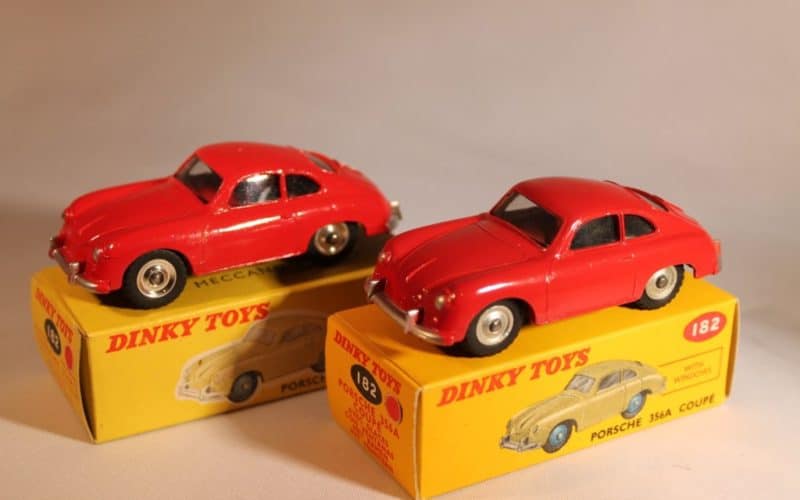
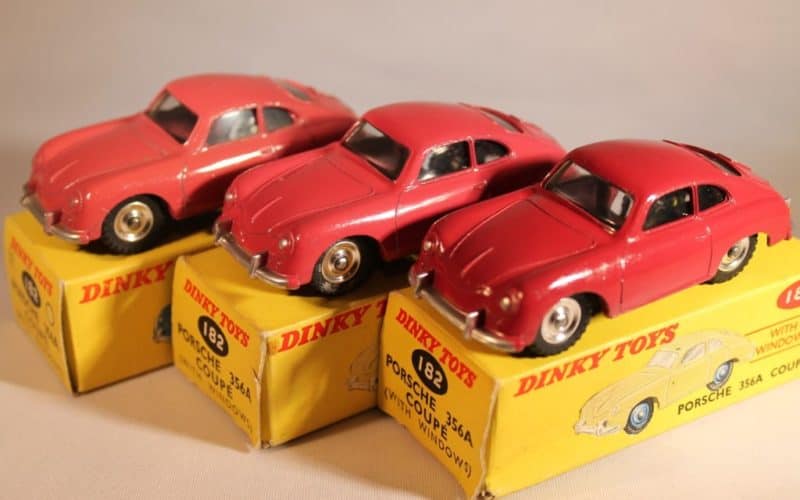
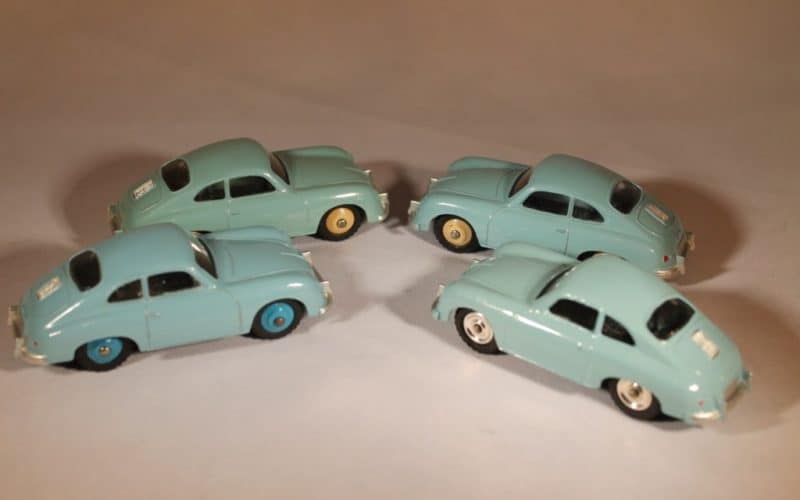
Statistics
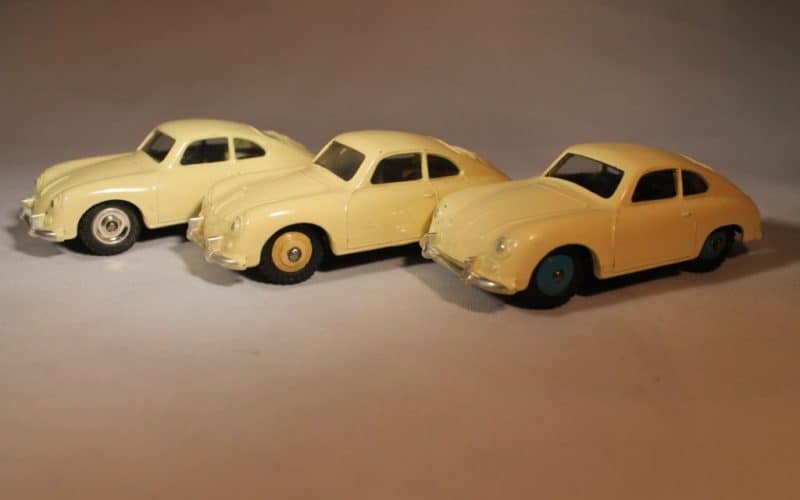
I have just researched a well known auction house sales over the last 25 years.
Of 150 models sold of No 182 Dinky Porsche and including all conditions these are:
- Blue with Cream wheels 46/150 = 31%
- Cream with blue wheels 41/150 = 27%
- Cream with spun 22/150 = 14.5
- Deep cerise with spun 13/150 = 8.6%
- Red with spun wheels 9/150 = 6%
- The Cerise lighter shades grouped 8/150 = 5.2%
- Red with silver painted/cast wheels 6/150 = 4%
- Blue with spun wheels 4/150 = 2.6%
- Cream with tan wheels 1/150 = 0.66%
- Blue with blue wheels 0/150 = 0%
Important Notes
The cream model with spun wheels was the only variation sold in the Goodwood 121 Gift set of sports cars which would have naturally increased its sales.
The three cerise shades are not always easy to identify unless in hand, hence why I have grouped the two lighter shades together in the statistics, as I have taken them off the web.
Estimated values are a guide only. Sometimes a more attractive body colour can reflect value more than scarcity. For example, the two standard colours of cream and blue with opposite wheel colours are very scarce with late black gloss bases, but how many collectors are as extreme as me with interest in these variations. Hence the value does not reflect the rarity.
I have seen a picture of a red model with blue wheels sold for a serious four figure premium but I have never seen this colour in hand.
I have also seen a cream model with red wheels but as a picture only.
If any reader can expand on this listing I would welcome an email with pictures and any comments.
Finally I would add that these articles are for your enjoyment, whether collectors or traders, and perhaps a controversy can be raised at times, for example, the colour phrases used or a value you feel is unfamiliar to you. I spend much time researching when assessing a value and base this on various auction houses and other sales sites, as well as my own and, of course, valued based on mint model and box.
I hope the introduction of sales statistics adds to the enjoyment of the article.